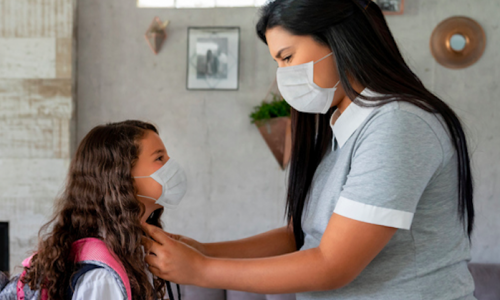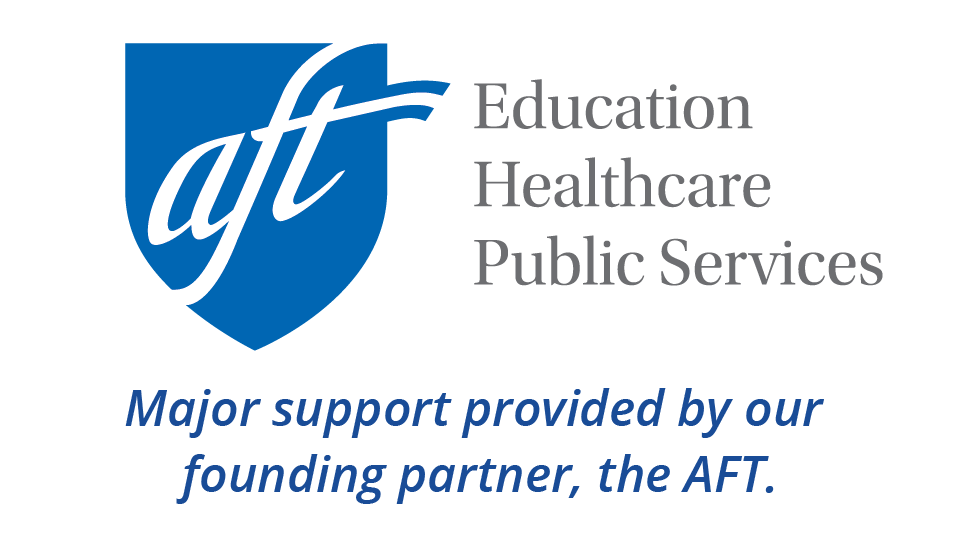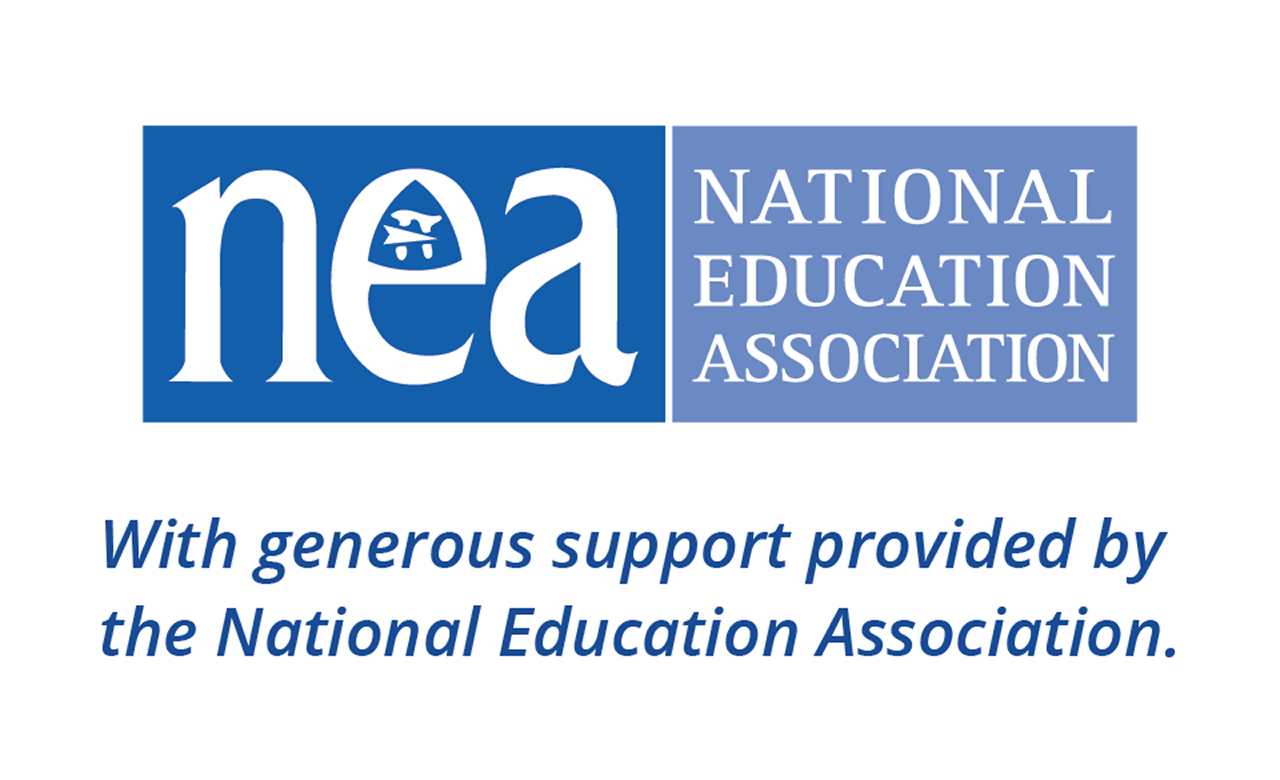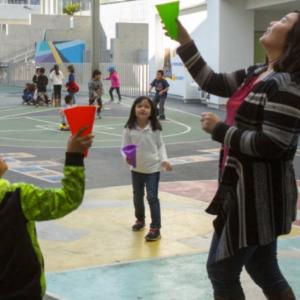In order for schools to serve English language learners (ELLs) effectively through COVID-19 and beyond, it's critical to understand some of the impacts of the pandemic on their communities. These impacts can affect everything from whether a student is completing assignments at home to the ability of a family member to self-quarantine after contracting COVID-19.
We encourage schools to partner with families and organizations to learn more about particular impacts in their community — strong partnerships can make a valuable difference in finding solutions together!
COVID-19 and refugees
Learn more about the impacts of COVID-19 on refugees — and how they are helping with the pandemic response.
The Impacts of COVID-19 on Immigrant Communities
Student and educator voices
There is a complex constellation of factors and stresses impacting immigrant families during the COVID-19 pandemic. While numerous non-immigrant families are also experiencing many of these challenges, it is important for schools serving ELL and immigrant students to understand how these factors are affecting their specific communities — and to understand why 75% of the young people who are dying from COVID-19 are minorties.
ELL and immigrant families may be facing high rates of COVID-19 in their communities that may related to:
- overcrowded housing
- lack of access to medical care, insurance, or sick leave
- disparities in testing, infection, hospitalization, and death
- pre-existing conditions
- additional risk and exposure as essential workers
- employment conditions that vary widely in safety provisions, especially for migrant farmworkers, as well as allegations of some troubling behavior by supervisors in those workplaces.
In addition, families may be facing hardship due to:
- loss of income and food security
- loss of housing
- threats of eviction or reporting families to the authorities based on immigration status
- concerns about child care, supervision, and safety
- lack of/limited access to economic relief at the local, state, or federal level for undocumented immigrants
- grief and/or a loss of caregivers
- stress, anxiety, and depression
- multiple children cooped up in crowded quarters
- gaps in access to flu vaccines
- returning to deteriorating school buildings with poor ventilation that may increase risk of COVID-19 transmission and exposure.
It's also important to keep in mind the following:
- ELL and immigrant families may be reluctant to send their children back to school for saftey reasons, but may also feel that remote learning is not an equitable or effective solution for their children.
- Limited access to school transportation may make getting to the school impossible for families, or increase the distance students have to walk, even in winter months.
- Many immigrant families live in multi-generational homes. Students or families may be concerned about high levels of risks to grandparents at home, and grandparents may be the primary adults supervising schoolwork.
- Older children may also have big responsibilities, including care for younger siblings or working outside of the home. As a result of the pandemic, students may be the primary breadwinners in their family.
- Children may be going to their parents' workplace during the day if there is no child care available.
- Even if immigrants do have access to certain benefits, they may be afraid that using them will adversely affect their immigration cases or lead to deportation.
- Families may be concerned about the health of relatives overseas or the impact of travel restrictions.
- Families may be sending remittances to relatives in other parts of the country or abroad.
- Families who have recently arrived in the U.S., including refugees, may have recently experienced months or years of trauma or upheaval even before the pandemic.
- College students, who may also now be their family's breadwinners, may be vulnerable without the food and housing available on their campus or putting their education and career plans on hold.
- American Indian and Alaska Native families have also been extremely hard hit by the pandemic.
At the same time, this uncertainty and upheaval comes at a time when many immigrant families were already facing hardship and many immigration-related concerns. Immigrant advocates and medical personnel are sharing numerous examples of immigrants who are not seeking medical care related to the COVID-19 out of fear of consequences for their immigration applications or fear of deportation.
This puts many immigrants and their families at risk who may work as essential personnel or who may not have qualified for federal economic relief due to immigration status. (The government has specified that COVID-19 care will not be used as part of public charge considerations, yet the communication around the public charge issue has left many families with more questions and answers.)
As a result, the combined pressures of the pandemic and heightened immigration enforcement have put a significant strain on families, making it difficult for them to support children's learning at home, especially if parents are working outside of the home.
Resource collections
For more on this topic, see the following resources:
- Immigrant-Serving Organizations' Perspectives on the COVID-19 Crisis (Urban Institute)
- COVID-19 Resources (Grantmakers Concerned with Immigrants and Refugees)
- Immigrant Eligibility for Public Programs During COVID-19 (Protecting Immigrant Families)
- Addressing Basic Needs of Immigrant Families: Strategies for Schools (Colorin Colorado)
Related headlines
- When the Teenager Is the Breadwinner (In These Times)
- They Work Full Time. They Attend School. They’re Only Teenagers. (Huffington Post)
- "It's just too much to handle:" The burden of coronavirus on Texan Latinos (The Washington Post)
- An immigrant community faces a "catastrophic" pandemic without help (The Washington Post)
- How The Coronavirus Crisis Is Impacting The Latino Community (NPR)
- In Illinois, Latinos have highest cases of coronavirus, and officials worry about a spike in deaths (NBC Latino)
Dr. Jesse Bump, a Lecturer on Global Health Policy and Executive Director of the Takemi Program in International Health at Harvard University, notes that this crisis is shining a light on the longstanding cracks in our social safety net and the inequities that impact millions of families every day.
"There is a thin thread that holds life together," he says, "and when it gets thinner, it breaks more easily."
Video: Housing challenges for immigrants during COVID-19
Juliana Urtubey, Nevada's 2021 Teacher of the Year, talks about some of the housing challenges that immigrants are facing during COVID-19.
Video: Social-emotional support for immigrant students during COVID-19
Nathaniel Provencio, Associate Superintendent of Prince William County Schools in Northern Virginia, talks about the impact of COVID-19 on his district's immigrant families, as well as the importance of social-emotional support for students during this time.
Identifying Families' Strengths
At the same time, it's important to keep families' strengths in mind at all times. ELL educators know what many in their school communities have not had the privilege to witness — the depths of commitment and sacrifice that ELL families have gone to on behalf of their children, the extraordinary measures they are taking to keep their families safe during the pandemic, and their courage in the face of great adversity.
They also have strong networks among their communities, and they are the best source of information on how the pandemic is impacting their children. While the challenges of this crisis are significant, many families will persevere — if their child's school invites them to the table as partners.
Resource: See strengths-based outreach ideas in EL Family Engagement During Coronavirus from Immigrant Connection
What Schools Can Do
Multilingual COVID-19 resources
- COVID-19 Information for ELL and Multilingual Families (also available in Spanish)
- Podcast: Nuestros ninos (available in Spanish)
Stay attuned for clues about families' experiences during COVID-19
As educators get to know their students and families, it's important stay attuned for clues about families' experiences during COVID-19 so far. Every family has their own unique story, many of which may be traumatic, and so it is important to build trust with families from the beginning of the relationship. Families may also have a wide range of questions and concerns related to this crisis based on their own perspective and experience.
In order to prepare for any conversations that may arise, look at the following:
- trauma-informed school strategies during COVID-19 from the National Child Traumatic Stress Network
- tips for building partnerships with immigrant families.
If you are just getting to know a family, you may wish to talk with a family liaison or community partner in order to figure out:
- how to handle communication with sensitivity and communicate most effectively with the family
- what issues or topics you should keep in mind or understand better
- if you should be aware of any cultural considerations in your communication.
If a family member is comfortable communicating with you, you might ask:
- how everyone is doing
- how students have responded to new schedules, ways of learning, or school closures
- if students or families have any questions or concerns or need any particular kind of support
- what some challenges of COVID-19 have been
- if there have been any silver linings/opportunities for their family.
Make social-emotional health a priority throughout the coming year.
Students may have high levels of anxiety with few outlets for support or discussion; disruptions to that stability may be particularly challenging for these students to manage. For many students who have experienced trauma, they may still be struggling with the loss of the daily routine, as well as the safe haven school provides, both physically and emotionally. Teachers who work regularly with ELLs may be able to identify key areas of concern among students, as well as some ideas for addressing those concerns.
The best way to address these social-emotional challenges is through collaboration with educators, social workers and/or counselors, family liaisons, and administrators. Putting together a "crisis support team" can offer an opportunity to:
- address key issues and priorities, especially if they are affecting multiple families
- brainstorm ideas on how best to partner with families and gather their input and ideas
- discuss cultural considerations that might impact how to handle communication with students and families
- identify community partners
- identify resources and strategies for support
- develop a list of activities or strategies that educators can use as part of their instruction
- identify key strategies that families can use to support their children
- identify clues to these stressors that educators can look for (without making assumptions)
- consider how these issues might impact students' ability to complete schoolwork
- develop a protocol for addressing challenging situations or behaviors.
Schools can also include these topics in their family outreach and encourage families to:
- keep talking with their children about the pandemic and how it is impacting daily life
- help their children stay in touch with family and friends
- contact a trusted adult at the school with any questions, especially around abuse or trauma
- look for ways to embed social-emotional learning throughout the curriculum.
In the classroom
Rather than making these topics central to student discussions, prepare some possible responses in case students do bring these topics up. Look for ways to strengthen your student relationships and social-emotional learning throughout the year in order to provide a safe and supportive space for student growth and learning.
Look for ways to strengthen families' safety net.
There are also ways that schools and districts can make a difference in the daily lives of their families. Here are some ideas to get started:
- If the district plans to make schools meals available, ensure that all families have access to that information. Teachers have reported that some districts are sending this information only in English. Some families are unlikely to be able to pick up meals during the mid-day. Many school districts are collaborating with community agencies and local businesses/restaurants. You can learn more about what your school district is doing in order to communicate that to families. You may be able to learn more about distribution sites through district, state, or news websites. The non-profits focused on hunger on this list may also have updated information.
- When possible, connect families with services/programs that can:
- help alleviate hardship in the event of school closures, missed meals, or lost wages
- provide medical care and support (especially if you suspect families are uninsured)
- provide social-emotional and mental health support for students and families.
- Look for opportunities to create new local partnerships (such as those used by community schools) that can help address these needs.
- Learn more from the following from our guide on how schools can support immigrant students.
Dr. Bump urges educators and advocates to encourage ELL, immigrants, and anyone under pressure from COVID-19 to reach out to make their needs known. There are and will continue to be major distributional problems and an important part of the solution if for people to speak up when they need something — whether it's health care and services, food, or domestic goods. Speaking up will also make it easier to connect those people and institutions that are willing and able to help others.
Bullying and Discrimination Related to COVID-19
Unfortunately, the COVID-19 pandemic has also given rise to bullying, harassment, and discrimination, both for immigrant communities as well as for Asian American communities. This has taken place in schools and beyond, including in medical settings where health professionals are being harassed.
Here are some tips to address these trends:
- Use resources like this comic, available in multiple languages, for class discussions, as well as these resources for talking about coronavirus.
- Remind students of how to treat each other with respect, as well as school rules on bullying and discrimination.
- Become familiar with strategies for preventing the bullying of ELL and immigrant students.
- Ask administrators at the school and district level to make public statements regarding bullying and harassment.
- Note that federal officials are keeping track of this issue. According to Education Week, "The civil rights arm at the U.S. Department of Education has urged schools to address the harassment of certain students amid ongoing concerns over the spread of the coronavirus."
- Share statements that other districts have made speaking out against bullying, such as the statements put out by Seattle Public Schools.
You can learn more from:
- Speaking Up Against Racism Around the New Coronavirus (Teaching Tolerance)
- Student Perspective: Coronavirus Racism Infected My High School (The New York Times)
- Feds Warn Schools About Bullying Over Coronavirus (Education Week)
- How Harmful Stereotypes and Racism are Spreading Around the Coronavirus (Time)
- 8 Tips to Protect ELLs from Bullying in Your Classroom and School (Language Lizard)
- Schools prepare for the coronavirus (The Washington Post)
Making the Most of Lessons Learned
Despite the tremendous challenges of this time, it is possible for positive things to come out of this crisis, including:
- better communication and collaboration among schools, families, and communities
- resourceful solutions for addressing different needs
- a push towards more equitable access for digital learning.
Professor Bump notes that this kind of crisis highlights our sense of community and resourcefulness as well as the good and generous nature of the American people. "People want to help each other out," he says, and this crisis will continue to provide some very concrete ways to do so.
It is our hope that these ideas offer some steps that you, your colleagues, or district and community leaders / partners can take on behalf of your English learners and immigrant students — steps which may just have some positive impacts for the future.
Acknowledgements
Special thanks to Kristina Robertson, Glenda Macal, Giselle Lundy-Ponce, Kathy Evans, and Dr. Jesse Bump for their contributions to this article.








Add new comment